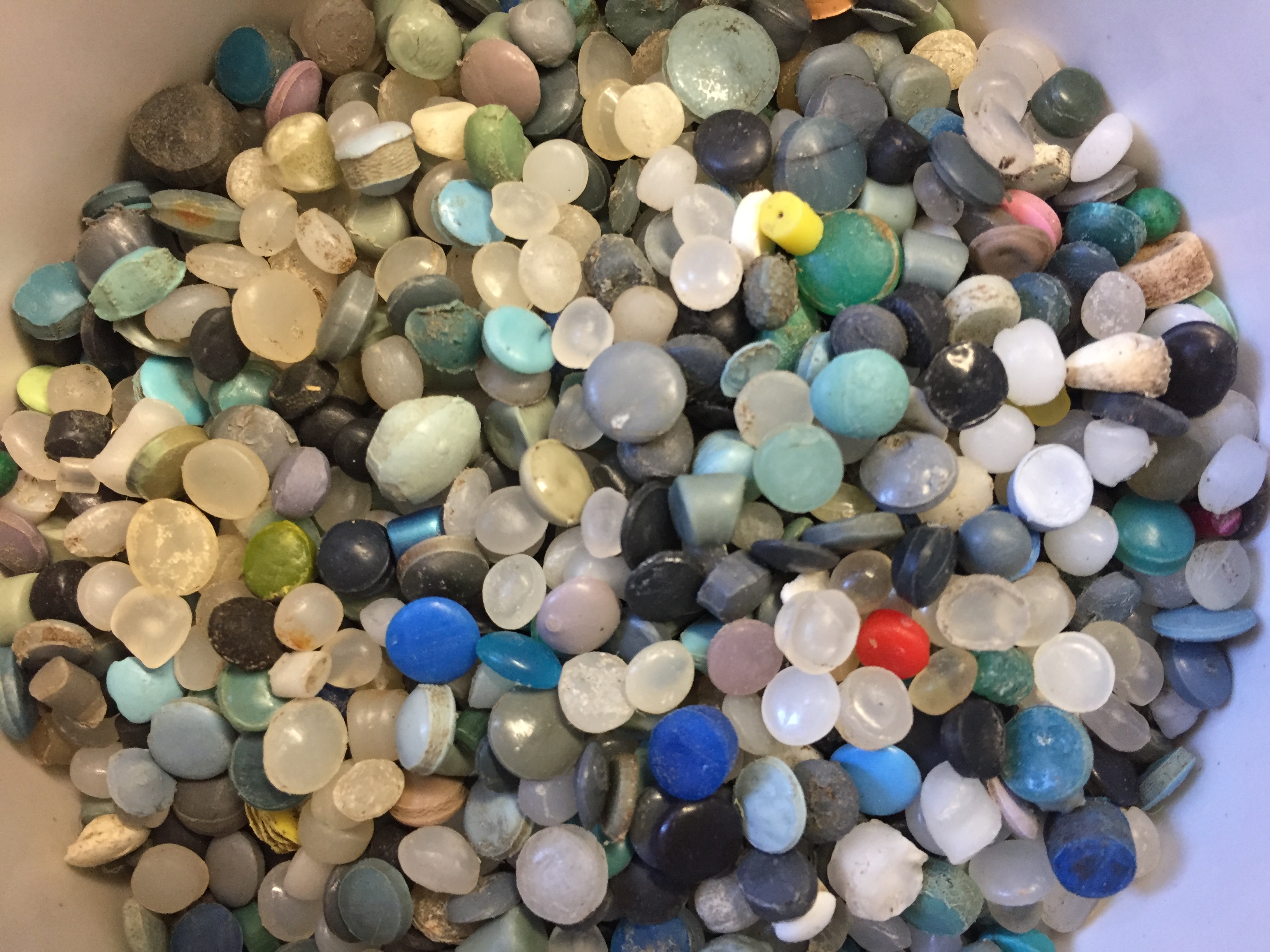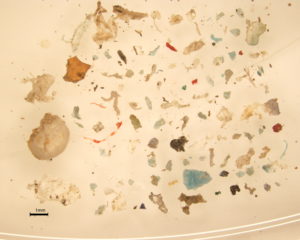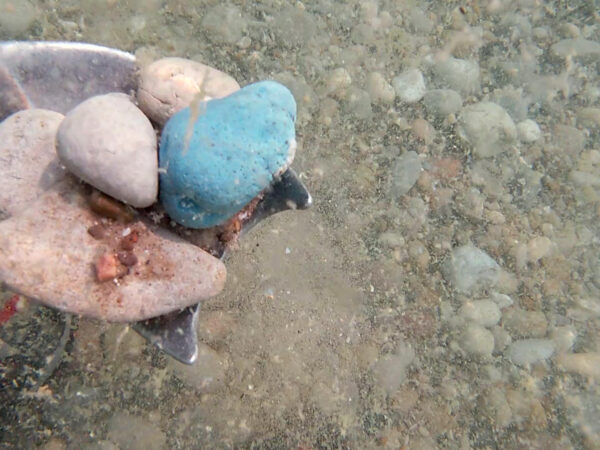
There are enough microplastic particles at the bottom of the Great Lakes that they are becoming a permanent part of the sedimentary layer, according to new research.
Centuries from now geologists will find them in Great Lakes’ rocks, formed from the compression of successive layers of plastic-laced sediment.
“They’ll be a marker on the sedimentary horizon,” said sedimentary petrologist Patricia Corcoran. “We’ll be known as that horrible group of humans who did this.”
Corcoran works at Western University in London, Ontario and leads a team of researchers that has been sifting through Great Lakes’ sediment for the past few years, looking for plastic particles.
They analyzed offshore and nearshore sediment samples from the Great Lakes and their tributaries, and are focussing on two types of plastic – microplastics and pellets.
Microplastics are five millimeters (0.2 inch) or smaller. They are often the result of the breakdown of water bottles, plastic bags or other things that started out larger. Clothing made of fleece or nylon can also shed microplastic fibers when washed, and those go down the drain and into the environment.
Plastic pellets are melted down and used in the manufacture of items such as plastic food containers.
Lake Erie anomaly
Corcoran’s microplastics research centres on lakes Ontario and Erie, while her pellet research extends to all five Great Lakes.
In general, the sediments with the greatest accumulation of microplastics were near cities and industrial facilities. She found particles buried as far down as 15 cm (6 inches) into the lakebed.
On average, Lake Ontario sediments contained 980 microplastic particles per kilogram (2.2 pounds) of dry weight sediment. (To get a sense of what that looks like, Corcoran suggests picturing a 1-kg bag of sugar with 980 plastic particles.)
Lake Erie sediments contained much less – 98 particles per kilogram – a counterintuitive finding considering Lake Erie is known for high levels of other pollutants.
Corcoran suspects that’s because she sampled only on the Canadian side of lakes Ontario and Erie. Studies of Lake Erie’s currents suggest most microplastic particles accumulate on the southern shore in the United States.
Meanwhile, pellets were most likely to show up in sediments near river outlets. This suggests the larger, more buoyant pellets float down rivers after spilling off trains or trucks transporting them to manufacturing plants.
In October 2018, Corcoran found pellets in Lake Superior sediments that came from a train derailment a decade earlier near the Nipigon River, a tributary of Lake Superior.
While the issue of microplastics in the Great Lakes is not new, Corcoran hopes her research will allow other scientists to focus on plastic hotspots and their effect on aquatic life.
“I can say these are the locations where most of the microplastics are located. Now we need to zero in on the organisms that live there,” she said.
Featured image: Plastic pellets from Great Lakes, Photo by Patricia Corcoran





